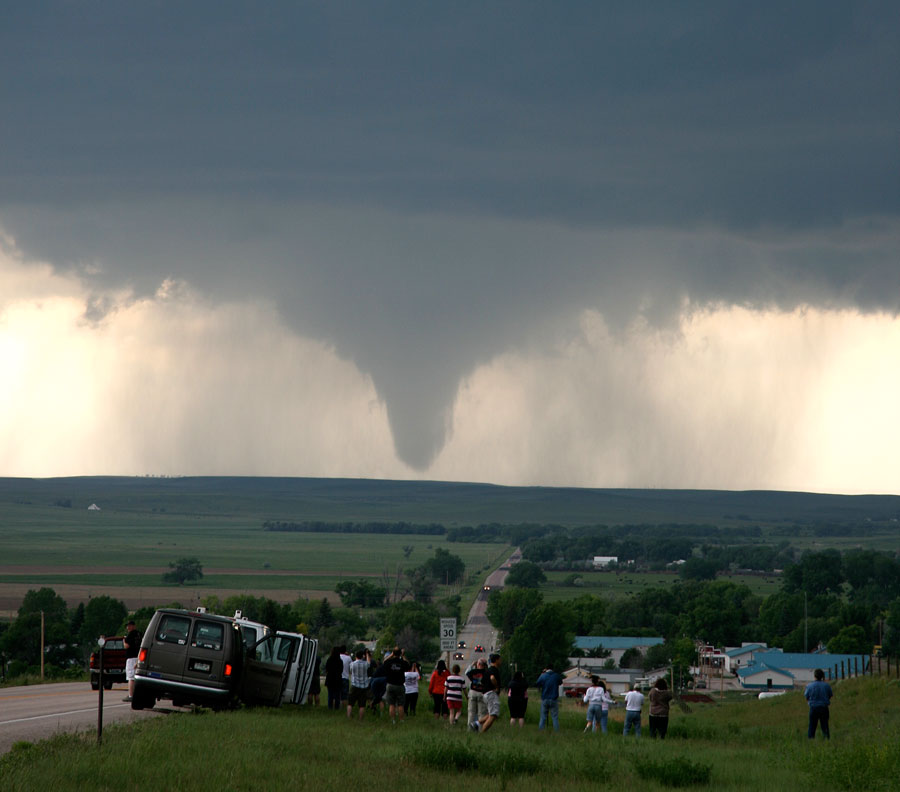Tornadoes
Storms, such as thunderstorms and hurricanes, become even more dangerous when they spawn tornadoes. A dark funnel of cloud extends down below the clouds of the storm. If it does not reach the ground, then it is called a funnel cloud. If it does reach the ground, it’s called a tornado. Debris and dust are kicked up where the narrow end of the funnel touches the ground.
Tornadoes, also called twisters, are columns of air rotating dangerously fast. The air is in motion because of the difference in pressure between the center of the tornado (very low pressure) and the outer edge of the tornado (high pressure). Some tornadoes are quite narrow — only 75 meters (250 feet) across where they touch the ground. Other, much more massive tornadoes can be up to two miles across. Often a tornado will touch the ground for only a few minutes and travel less than a mile. But some tornadoes touchdown for much longer, plowing through towns, neighborhoods, or farms.
After a tornado has come and gone, scientists look at the amount of damage that it caused to figure out the strength of the twister. They use the Enhanced Fujita (EF) Scale - six categories that describe how tornado damage relates to wind speeds. According to the scale, EF0 is the weakest tornado category with gusts up to 85 mph (135 kph) and EF5 is the strongest tornado with wind gusts over 200 mph (320 kph).
In general, tornadoes fall into three types: weak tornadoes, strong tornadoes, and violent tornadoes. A tornado's type is based on its size, how long it lasts and how much damage it causes.
- Weak tornadoes usually last less than 10 minutes, have winds less than 100 mph (160 kph) and cause damage such as broken tree branches and damaged roofs. Over two-thirds of all tornadoes are weak. Weak tornadoes include those in the first two categories of the Enhanced Fujita Scale: EF0 and EF1.
- Strong tornadoes can last 20 minutes or longer and have winds of 110 to 205 mph (177 to 330 kph) — strong enough to demolish mobile homes and overturn trains. Nearly a third of tornadoes are strong and they cause nearly a third of all tornado-related deaths. Strong tornadoes include those in the next two categories of the Enhanced Fujita Scale: EF2 and EF3.
- Violent tornadoes can last over an hour and have wind speeds greater than 205 mph (330 kph). These monster tornadoes can toss cars and houses into the air and carry them for miles. While violent tornadoes are the least common, they are the deadliest, causing over two-thirds of all tornado-related deaths. A violent tornado is part of the last two categories on the Enhanced Fujita Scale: EF4 and EF5.
Tornadoes can occur anywhere in the world. About 75% of the world’s tornadoes occur in the United States; most in an area of the central US called Tornado Alley.
